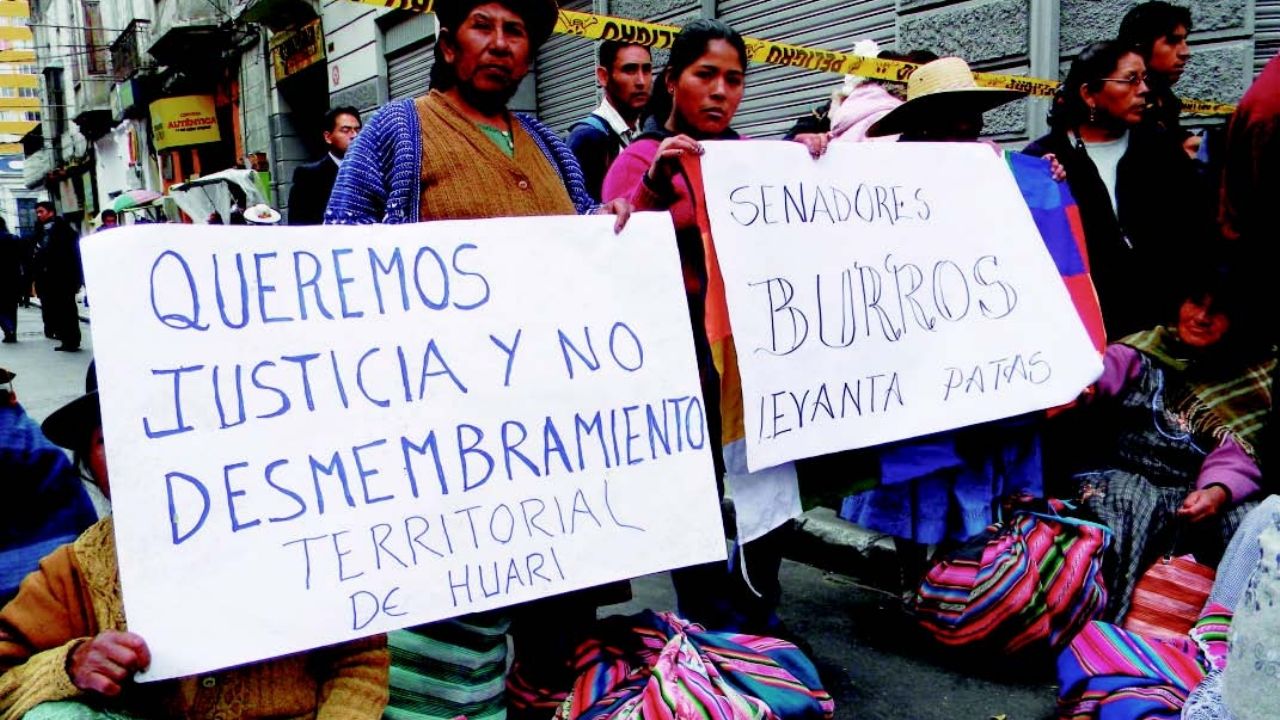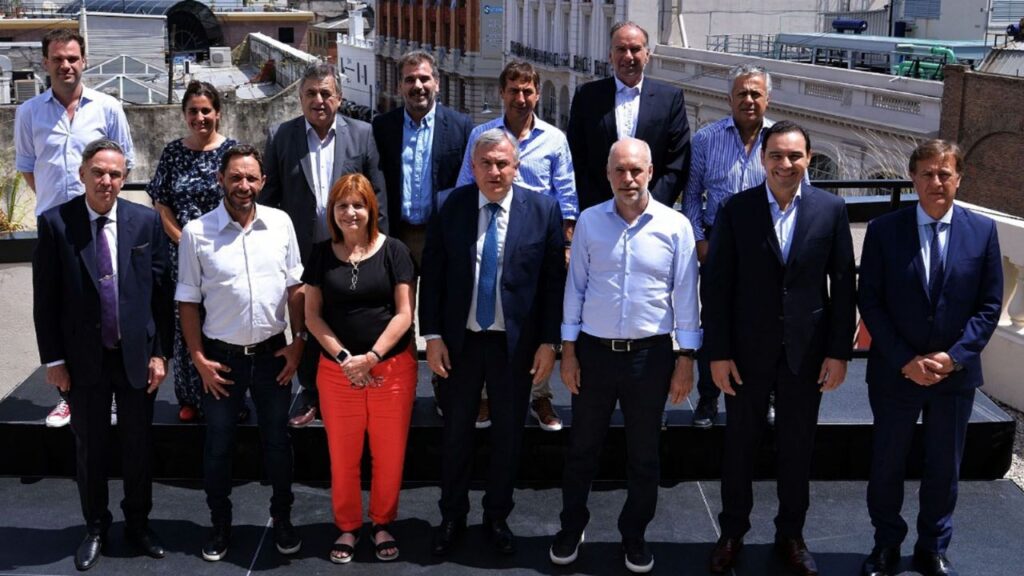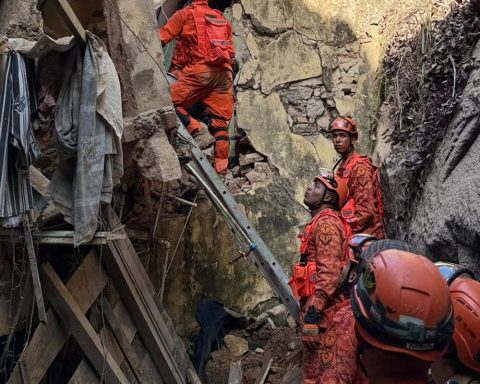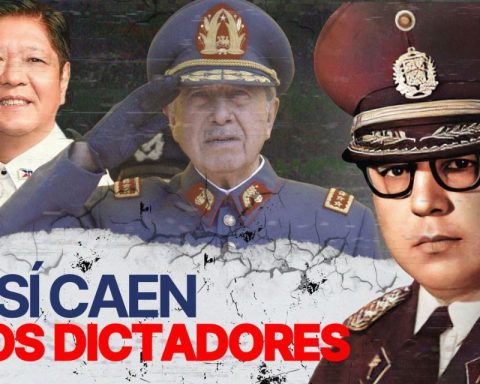Maria Mena M. /Cochabamba
Tires, stones, trunks, branches and wires formed barricades at kilometers 7 and 10 of the old highway to Santa Cruz-Cochabamba that impeded vehicular traffic. “Enough of enslavement!”, was heard shouting from inhabitants of the municipality of Arbieto who accuse the authorities of Cercado of invading their territory with the expansion of the urban sprawl. There were three consecutive days of blockades -February 7, 8 and 9- with protests for supposed invasion of limits.
They are not the only regions of Cochabamba in conflict over boundaries. Of the 47 municipalities of the department, the technical unit of limits of the Government processes 32 requests for delimitation and/or adjoining; that is, some kind of conflict of territorial limits.
Of these cases, four municipalities seek to settle their differences through a referendum, although there is no date for the popular consultations because different stages must be completed before reaching the vote.
Completed and active
The head of the technical unit of limits of the Government, Ángel Pinto, explains that of these 32 requests, 13 have “completed extraordinarily”; which means that the parties involved (municipal authorities, leaders and communities) did not reach an agreement on the territorial delimitation despite the fact that consensus was sought.
“Law 339 has the objective of reconciling the limit. Extraordinary conclusion means that these processes did not conclude normally”, says Pinto.
To reach this stage, the rule establishes three grounds: waiver of conciliation, physical attacks or confrontations and lack of payment for the demarcation that is carried out by the Military Geographic Institute (IGM).
The municipalities of San Benito-Punata, Punata-Villa Rivero, Arbierto-Tolata, Chimoré-Puerto Villarroel and Tiquipaya-Colcapirhua, among others, are facing this situation.
Now, among the 32 requests there are 19 active processes that are in different stages, continues Pinto. There are three phases: the first is the beginning of the process; Then there is the field execution, which is considered the most important because it is in it that the acts of conciliation or rejection of any settlement are signed, and the last one is the demarcation of limits by the IGM.
The IGM issues a technical report with which the Government processes a resolution homologating the results achieved -if there was conciliation- to derive the file to the Vice Ministry of Autonomies. Later it is transferred to the Legislative Assembly so that it approves the delimitation.
The active cases in the final stage are among the municipalities: Cercado-Arbieto; Arbieto-Tolata; Omereque-Totora; Punata-Arani; Bolivar-Tacopaya; Punata-Cliza; Bolivar-Arque, and others.
the urban sprawl
On February 7, the mayor of Cochabamba, Manfred Reyes Villa, delivered Municipal Law 1102/2022 on the expansion of homologated urban areas, which seeks to benefit thousands of families in districts 9 and 15 of the South zone by regularizing your proprietary right. This rule will allow them to access basic services.
However, that norm was the beginning of a series of conflicts with the neighboring municipalities of the city of Cochabamba: Arbierto and Santiváñez.
Photo: Opinion
“We are affected 28 OTB with the expansion of the urban sprawl of Cercado. The Deputy Mayor of District 4 has been advancing our municipality. We are not against the homologation of the urban sprawl, but that they respect the territory of Arbieto”, said a leader on February 8, during the blockade of the old highway to Santa Cruz. After three days of blockades, the inhabitants of Arbieto and Santiváñez lifted the measure after the official commitment to inspect the limits of the three regions involved.
From the Government they reported that in the technical unit of limits there was a conciliation process between the municipalities of Cochabamba and Arbieto since 2017 and that to date it is in the final stage.
Referendum for a well
Pinto mentions a particular case between the municipalities of Tacachi and Cuchumuela due to the drilling of a water well. “Some said that the well is in Tacachi territory and others, in Cuchumuela. In that case, there is a delimitation process that is already in the ALP so that a referendum can be called through a law”, the official specifies.
Both regions activated the process in 2018, but due to the conflicts of 2019 and later due to the pandemic, the treatment of the case in the ALP is delayed.
Villa Tunari and Colomi have not accepted the path of conciliation either after presenting the technical proposals for maps and coordinates, where more territory was attributed than was supposedly theirs. As there is no agreement regarding the limits, both municipalities must also go to a referendum.
historical messes
The municipalities of Quillacollo, Vinto and Sipe Sipe, which are adjoining, are also in conflict over territory and are targets of the invaders. There are areas, not yet delimited, where there are urbanizations already consolidated without the endorsement of any of those municipalities.
Likewise, last year the territorial differences between Tarata and Arbieto were reactivated. The inhabitants of both regions blocked the road to Valle Alto, claiming territory that has not yet been defined.
The causes
For Pinto, among the causes that trigger border conflicts between municipalities are natural and economic resources. “It is not a recent issue. In 1994, the Popular Participation Law established that the resources generated by the TGN were assigned to the municipalities according to the number of inhabitants. That is why everyone wants to have more inhabitants and obviously also territory”, he explains.
Another cause is usually attributed to the exploitation of natural resources, such as water. The former Vice Minister of Autonomy Hugo Siles agrees with respect to these reasons. “They have to do with natural resources, with population growth that in some way overflows historical limits. The population weight influences the distributive factor of the tax sharing of resources and income. It is at the municipal subnational level where the greatest conflicts are recorded,” says Siles.
Eight departments have conflicts over territories
Of the nine departments of the country, eight have been in conflict over the delimitation of their territories since 2015. They are fighting for limits: La Paz-Oruro; Potosí-Chuquisaca; Santa Cruz-Chuquisaca; Oruro-Cochabamba; Tarija- Chuquisaca and Cochabamba – Beni. Pando is the only region without problems by demarcations.
“These data were collected until 2019. I understand that the governorates have not activated new departmental delimitations,” reported the former Deputy Minister of Autonomies Hugo Siles.
The former authority clarified that “almost” all the departments have their historical limits defined and/or consolidated and therefore do not activate any process, but there are some inactive “conflictive” sections.
In 2021, a conflict was triggered between the departments of Oruro and Potosí over the installation of a hotel in the Salar de Uyuni, which would have obtained operating authorization from the Government of Oruro, despite the fact that it was installed in Potosí territory. The complaint triggered a series of regional protests and confrontations that ended with the removal of the domes installed on the site.
For Siles, that difference was not one of limits. “I explained that this was not a conflict of limits because the Salar de Uyuni cannot be subject to delimitation as it is patrimonial. What there was was a conflict of competencies of who authorized the domes and who gave the permits for them to work”, he said.
The departments of Santa Cruz and Chuquisaca were confronted by the Incahuasi gas reserves, although it was later determined that this field is in Santa Cruz territory.

Photo: Opinion
Another decades-long territorial problem is between Cochabamba and Beni, which dispute the limits of the Isiboro Sécure National Park. Indigenous communities accused settlers from the tropics on several occasions of planting coca plantations in Beni territory.
The only department that did not register differences in its demarcations is Pando, which borders Beni and La Paz.

Photo: Page Seven / File
To receive more resources, the municipalities want more inhabitants and obviously also more territory
Angel Pinto, Government
32
PROCESSES
of delimitation and/or adjoining
between municipalities are listed in the
Government of Cochabamba.
Conflicts have to do with resources or population growth that exceeds historical limits
Hugo Siles, former Vice Minister


















